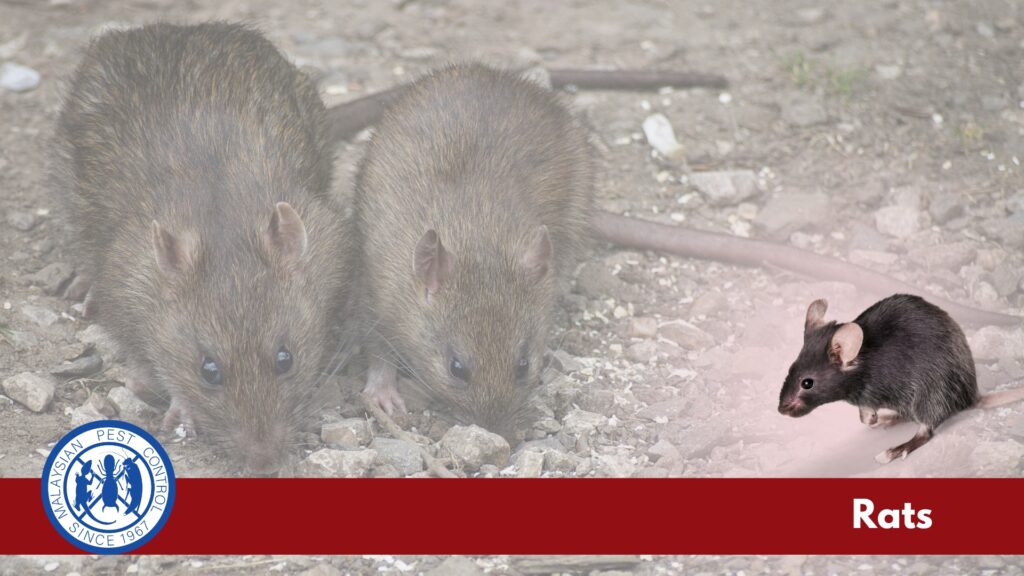About Rats

Introduction to Rats
- Rats are medium-sized, long-tailed rodents belonging primarily to the genera Rattus, among which the most notable species are the Norway Rat (Rattus norvegicus) and the Roof Rat (Rattus rattus). These species are known for their adaptability, intelligence, and prolific breeding capabilities.
- Significance: Rats are considered a major pest due to their ability to spread diseases, damage infrastructure and crops, and compete with native wildlife for resources. Their presence is associated with significant economic and health concerns.
Biology and Lifecycle
- Reproduction: Rats are known for their rapid reproduction rate. A single pair of rats can produce a large number of offspring in a year, with females capable of producing up to five litters annually, each litter containing 6-12 young.
- Growth: Rat pups are born blind and hairless but grow quickly, becoming sexually mature in about 5 weeks. This rapid growth and maturation cycle allow rat populations to increase swiftly under favorable conditions.
- Lifespan: While rats can live up to 2-3 years in captivity, most wild rats rarely live longer than a year due to predation, disease, and human control efforts.
Behaviour and Habitat
- Social Structure: Rats are highly social and live in complex hierarchical societies within their burrows or nests. They communicate through a variety of sounds and scents.
- Foraging: They are omnivorous and opportunistic feeders, consuming a wide range of food, from grains and seeds to fruits and meats. Rats are known to travel great distances in search of food.
- Habitat: Rats are extremely adaptable and can be found in nearly every type of environment, from rural farms to dense urban areas. They prefer locations that provide ample food sources, water, and shelter, such as sewers, garbage dumps, and buildings.
Interaction with Humans and Pets
- Disease Transmission: Rats are vectors for numerous diseases that can affect humans and animals, including leptospirosis, hantavirus, and bubonic plague. They spread diseases through their urine, feces, saliva, and fleas.
- Property Damage: Rats have strong teeth that allow them to chew through materials like wood, plastic, and even soft metals, leading to significant damage to infrastructure, vehicles, and homes.
- Control Measures: Managing rat populations typically involves a combination of sanitation efforts, proofing buildings to prevent entry, and population control through traps, rodenticides, and, in some cases, biological control methods.
Reproductive Rate of Rats
A female rat can start breeding as early as 5 weeks of age and can produce up to 5 litters a year, with each litter averaging 6-12 pups. For the sake of calculation, let’s assume:
- Each female produces 5 litters per year.
- Each litter has an average of 8 pups (a conservative estimate between 6-12).
Growth of the Colony
- First Litter: The original pair produces 8 pups.
- Assuming half of these pups are female, and they too begin reproducing at 5 weeks, the growth of the colony accelerates because each new female adds additional pups to the colony multiple times a year.
Simplified Calculation for One Year
- Let’s use a simplified model and assume that each pair produces only 5 litters of 8 pups a year, and half of these pups survive and reproduce.
- First Generation (original pair): 40 pups/year.
- Second Generation: If each of the 20 females (half of the first generation) starts breeding and produces similarly: 20 females x 40 pups = 800 pups/year.



